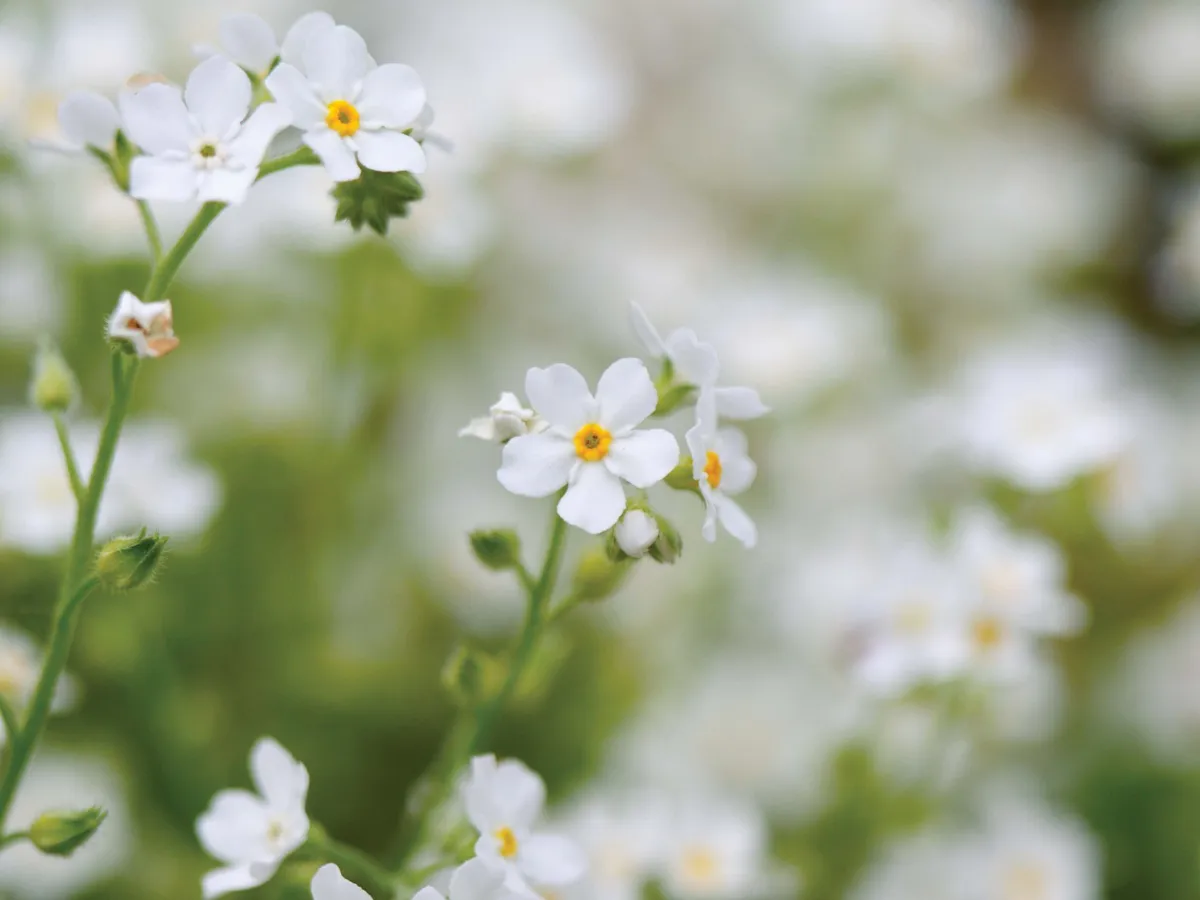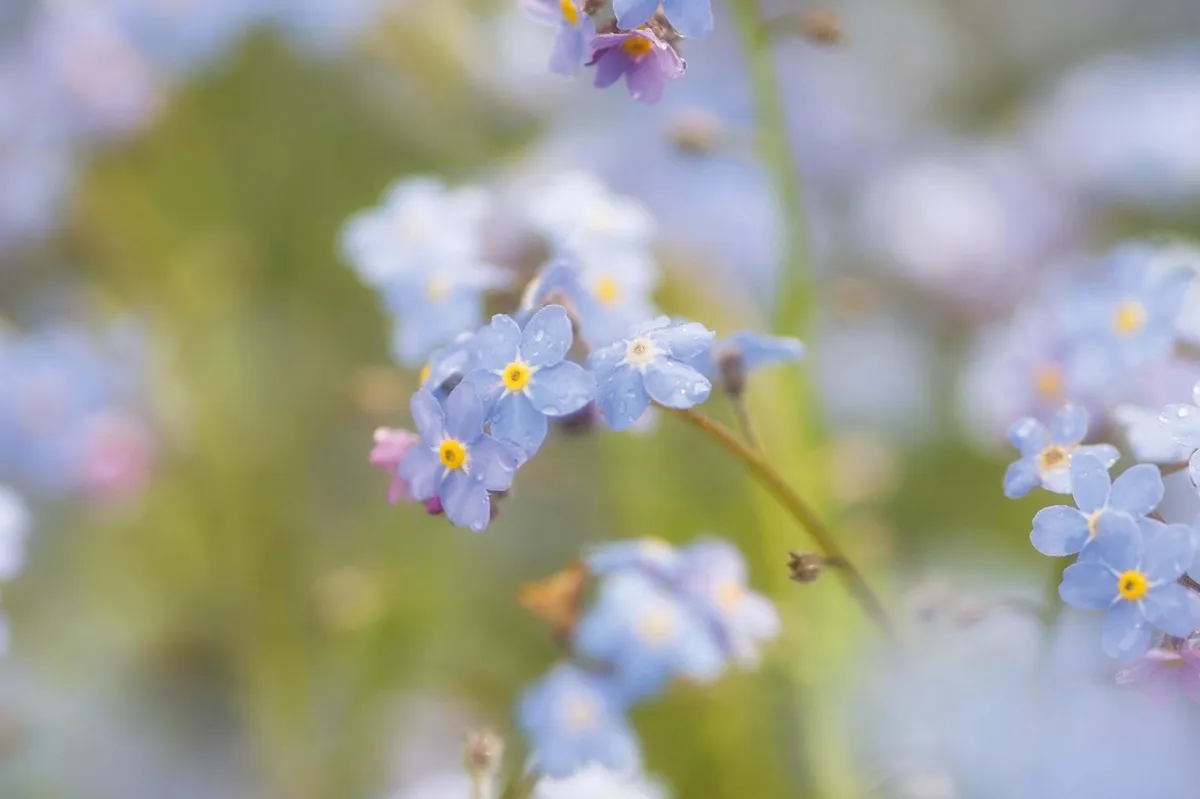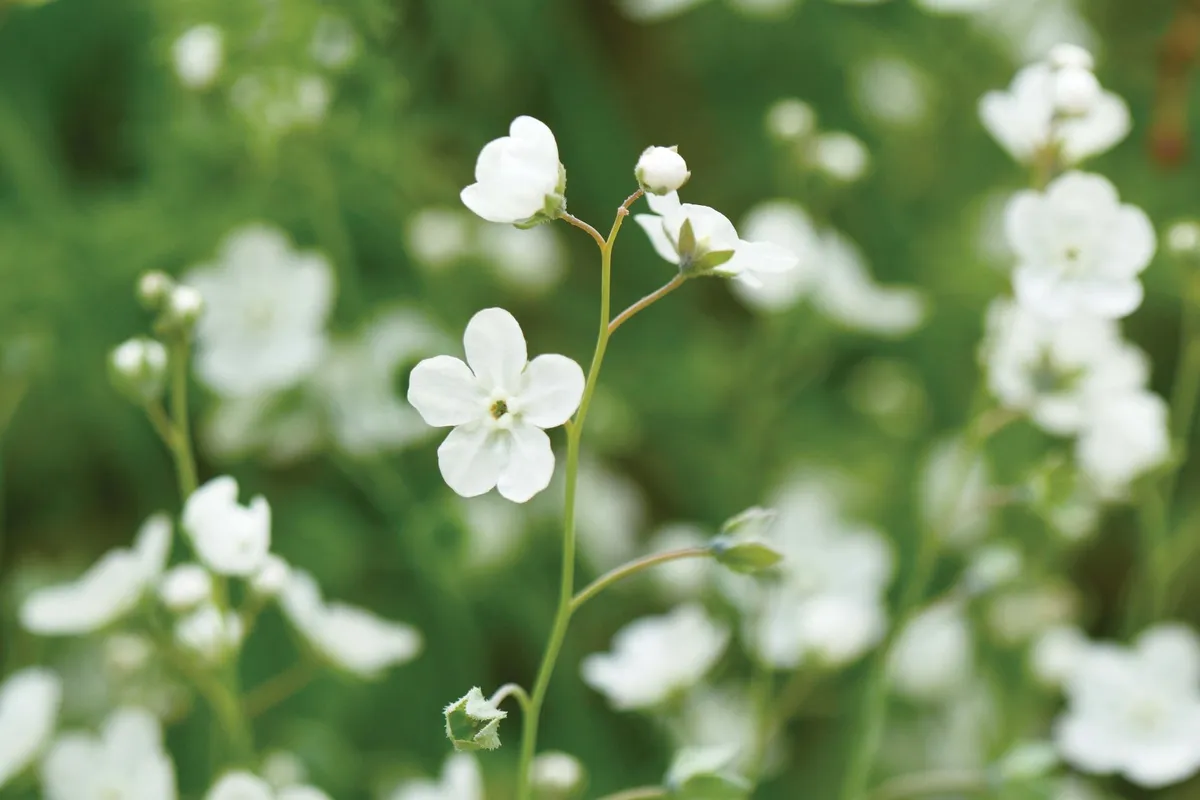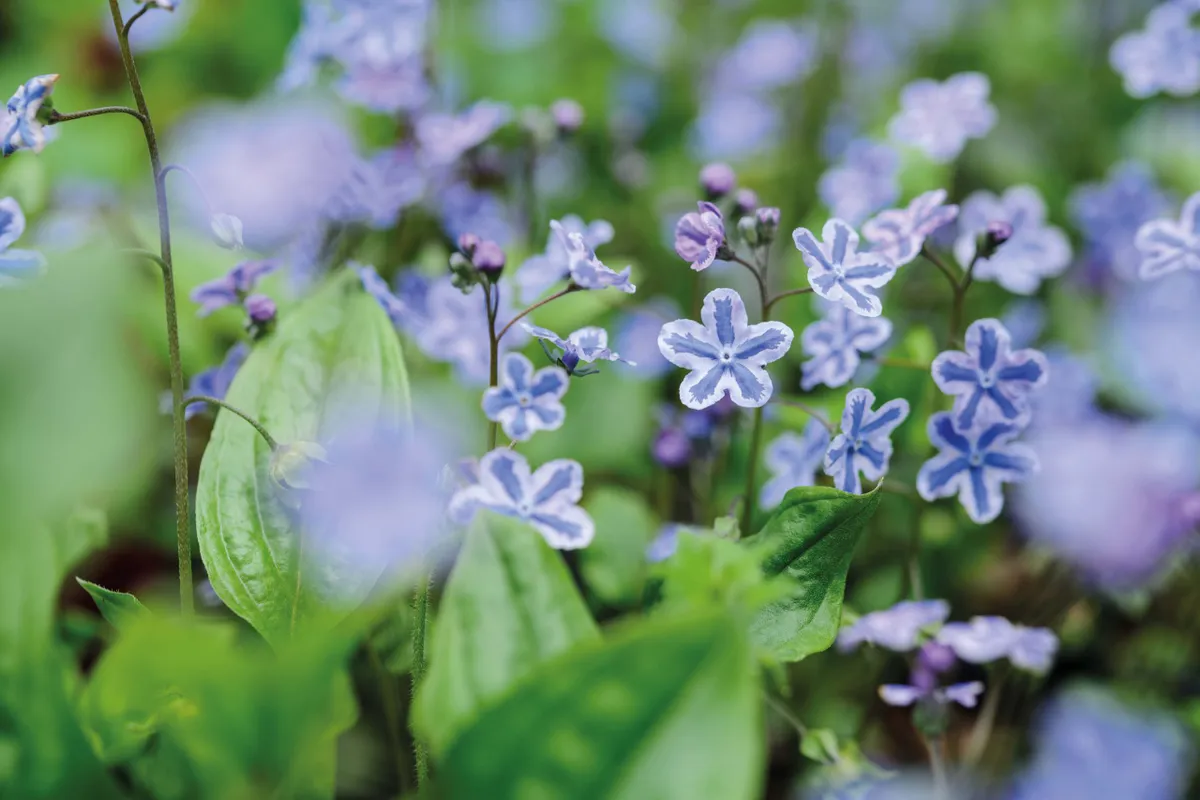Forget-me-not flowers come from the plant family Boraginaceae, which comprises some 120 genera and 2,600 species, while the subfamily Boraginoideae is made up of 42 genera and more than 600 species. It includes annuals, biennials and perennials with a few climbers and large trees. Many, not just Myosotis, are commonly known as forget-me-nots, while others with forget-me-not flowers are known as navelworts, bugloss and borage.
Jump to
- How and when to sow forget-me-not seeds
- Where to plant forget-me-nots
- Conditions forget-me-nots will grow in
- How to propagate forget-me-not flowers

How and when to sow forget-me-not flower seeds
- Surface sow Myosotis species and cultivars in mid to late spring, on to moist, well-drained, peat-free seed compost and then either put the tray in a dark place or cover it lightly with compost.
- Darkness is required for germination, which takes from less than a week to a month at 20°C.
- Once seedlings are large enough to handle, prick them out, then transplant to their final position at 25cm apart. Seeds can also be sown directly where they’re to flower once the danger of frost has passed.
- Rake the ground into a fine tilth, then sow in straight drills, so it is easier to identify and remove weed seedlings. The straight lines disappear as the plants grow. Forget-me-nots self-seed prolifically and can rapidly become a nuisance, so cut back after flowering.
Where to plant forget-me-nots
Success with most of these plants relies on planting in the right location, so understanding their native habitats ensures you put the ‘right plant in the right place’. Most Myosotis cultivars are derived from Myosotis scorpioides (the water or marsh forget-me-not) and Myosotis sylvatica (the wood or garden forget-me-not). Myosotis scorpioides, from central and northern Europe, Asia and North Africa, is found in damp ditches, or shallow watercourses, in sun or light shade, making it ideal for bog gardens or pond margins. Myosotis sylvatica is found in damp woodland and mountain grassland to 2,000m, and needs well-drained soil and dappled shade.
Anchusa grows throughout Central Asia and the Mediterranean, on hillsides, in poor, well-drained soil and full sun. Omphalodes cappadocica from Turkey and the Caucasus prefers moist, humus-rich soil, in cool, dappled shade, while Brunnera comes from the mountain forests of the Caucasus, where air is cool and moist and the soil rich, so place accordingly.
Conditions forget-me-nots will grow in
Forget-me-not flowers occur in a wide range of habitats from sea level to 4,000m from high-altitude alpine screes to lowland tropics. Most of those considered garden worthy are from cool temperate woodland, mainly from deciduous woods but occasionally evergreen forests of spruce, pine or fir. Many forget-me-not flowers found at high altitude grow in rock crevices and are snow covered in winter. Their hardiness rating is variable.
Lovely forget me not flowers to grow
Myosotis sylvatica

A pretty, variable, late spring to early summer flowering forget-me-not perennial, often grown as a biennial, with grey-green leaves and loose clusters of abundant bright pale-blue, fragrant flowers with a yellow eye emerging from deep-pink buds. Good for pollinators. 50cm. RHS H6, USDA 3a-8b.
Omphalodes linifolia

A pretty annual, found in dry, open habitats in southwest Europe and northwest Africa, often on highly alkaline soil. Produces long racemes of fragrant, white, forget-me-not flowers in summer. Ideal in a sunny, raised position and easy from seed. 50cm. AGM. RHS H3.
Omphalodes cappadocica ‘Starry Eyes’

A more-or-less evergreen perennial that forms dense clumps of fast-growing, heart-shaped, mid-green leaves. The spring flowers, which always stay just ahead of the leaf growth, appear in airy sprays and are lightly tinted pale blue with a deeper blue star in the centre. 50cm. RHS H5, USDA 6a-9b.
Myosotidium hortensia
needs gritty, moist, free-draining soil in a sheltered frost-free position. It prefers mild climates and, in colder climates, to be under glass. It also flourishes in pots of John Innes No.2 or a similar loam-based compost.
How to propagate forget-me-not flowers
Propagate by sowing fresh seed in autumn, as soon as it is ripe, or by dividing plants in spring. Keep the compost moist and feed monthly with a seaweed-based liquid fertiliser, and mulch with seaweed where possible. Anchusa can be propagated by seed, but if you want to be sure to maintain the intense blue flowers of named cultivars, you will need to take softwood or root cuttings from mid-autumn into winter. Anchusa are tap-rooted so will need a deep planting hole and shouldn’t be moved during the growing season or you risk damaging the tap root, which rules out propagation by division during active growth.
Omphalodes can be seed-sown in pots in a cold frame in spring or you can propagate by division or by cuttings in early spring. Brunnera can also be propagated by division or root cuttings in early spring or by root cuttings in winter. Lithodora diffusa should be propagated by taking semi-ripe cuttings from July until September.
Origins of forget-me-not flowers
Found mainly in the temperate northern hemisphere, particularly in the Mediterranean, as well as in Australasia, South America and South Africa; some genera are almost exclusively located in the tropics. Flowering season is early spring to late summer.
Where to see and buy forget-me-nots
Beth Chatto Gardens Elmstead Market, Colchester, Essex CO7 7DB. Tel 01206 822007, bethchatto.co.uk
Bide-A-Wee Cottage Gardens Stanton, Netherwitton, Morpeth, Northumberland NE65 8PR. Tel 01670 772004, bideawee.co.uk
Burncoose Nurseries Gwennap, Redruth, Cornwall TR16 6BJ. Tel 01209 860316, burncoose.co.uk
National Collection of Omphalodes and Brunnera Mrs J Pumfrey, Hearns House, Reading, Berkshire RG4 9DE. Tel 0118 972 2848.
